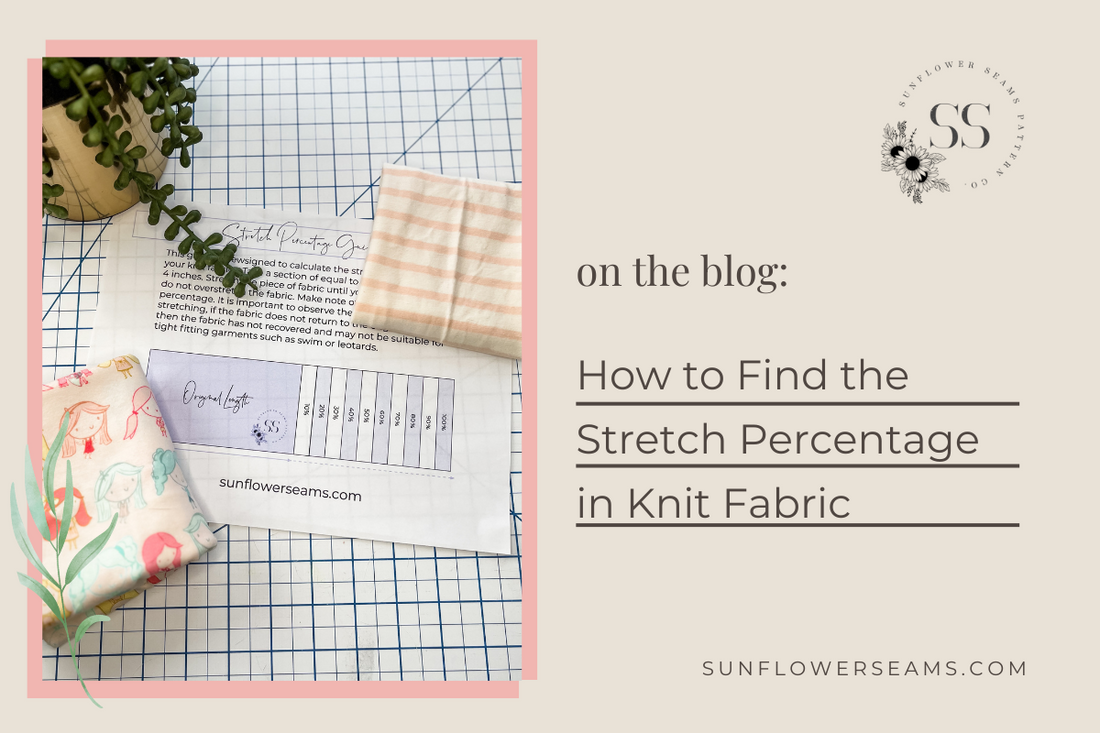When it comes to working with knit fabrics, understanding their stretch percentage is crucial for achieving optimal results in sewing and garment fitting. Unlike woven fabrics, knit fabrics have the ability to stretch, which makes them comfortable to wear and ideal for creating form-fitting garments. In this blog post, we will explore the concept of stretch percentage in knit fabric and provide you with practical methods to accurately measure and determine the stretch percentage of your favorite knit fabrics.

Understanding Stretch Percentage:
Stretch percentage, also known as stretch factor or stretch ratio, refers to the amount of elongation a knit fabric can achieve when pulled. It is typically expressed as a percentage, representing the increase in length compared to its original size. For example, a fabric with a stretch percentage of 50% will stretch to 1.5 times its original length when pulled.
Measuring Stretch Percentage:
Now let's dive into the process of measuring the stretch percentage of a knit fabric. You will need this handy stretch percentage download we have created for you and a piece of the fabric you want to test.
-
Find a reference point: Select an easily identifiable point on your fabric, such as a stripe or a print design, to act as your reference point. This will help you measure the elongation accurately.

-
Determine the original length: Place your ruler or measuring tape along the reference point and note the starting measurement. For instance, let's say the original length is 10 inches.
-
Apply tension: Gently pull the fabric in a perpendicular direction to the reference point. Ensure that you maintain an even and steady pull without distorting the fabric.

-
Measure the stretched length: While holding the tension, measure the new length of the fabric along the same reference point. Let's say the stretched length is 15 inches.
-
Calculate the stretch percentage: To determine the stretch percentage, use the following formula:
Stretch Percentage = ((Stretched Length - Original Length) / Original Length) * 100
In our example: ((15 - 10) / 10) * 100 = 50%
Tips for Accurate Measurements:
- Use a ruler or measuring tape with clear markings to obtain precise measurements.
- Make sure to pull the fabric evenly without causing any additional tension on one side.
- Perform multiple measurements across different areas of the fabric to account for variations in stretch.
- Using a stretch percentage guide, like the one we have provided HERE, can help determine the stretch and recovery.
Utilizing Stretch Percentage:
Understanding the stretch percentage of your knit fabric is essential for various sewing and fitting scenarios:
-
Pattern adjustments: If a pattern requires a specific amount of stretch, knowing the stretch percentage of your fabric will help you make appropriate adjustments. You can adjust the pattern pieces to accommodate more or less stretch, ensuring the desired fit.
-
Garment fitting: When creating knit garments, such as leggings, choosing a fabric with the right stretch percentage is crucial. The fabric should have enough stretch to comfortably hug the body without losing its shape.
-
Elastic selection: Stretch percentage is also vital when selecting elastic for waistbands, cuffs, or other areas that require elasticity. Choosing an elastic with a similar stretch percentage to your fabric will ensure a snug and comfortable fit.
Determining the stretch percentage of knit fabric empowers you to make informed decisions during the sewing process. By following the measurement techniques outlined in this blog post, you can accurately gauge the stretch factor of your fabrics and confidently select the appropriate materials for your projects. Remember, practice makes perfect, so experiment with different fabrics and become familiar with their unique stretch properties.
Now that you've determined the stretch percentage and recovery of your knit fabric, it's time to start sewing! You can find all our knit patterns here.
Happy sewing!


